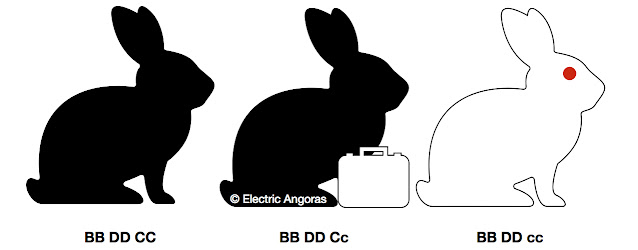The C Locus: The Department of Pigment Taxation

This post is Lesson 5 in our Rabbit Genetics Illustrated series. The C Locus is home of the Pigment Taxation Department. The letters you see in this portion of our recipe will tell you if your rabbit gets to keep all of their pigments, if your rabbit has to give up some of their pigments and which ones, or if your rabbit does not get to show off any pigment at all and will be a red eyed albino. There are 5 genes that you can encounter here. Let's start with the two extreme opposites as those are the easiest. First up is the big letter "C". This is the most dominant gene on this Locus and the kindest member of this department. The big "C" stands for full colour. Nothing is taxed, no pigments are reduced or taken away, the rabbit gets to keep all of their colour. All of our example rabbits from previous lessons were "C" or full colour rabbits. Because "C" is the most dominant gene here, a single copy is all it takes for the rabbit to be ab...






